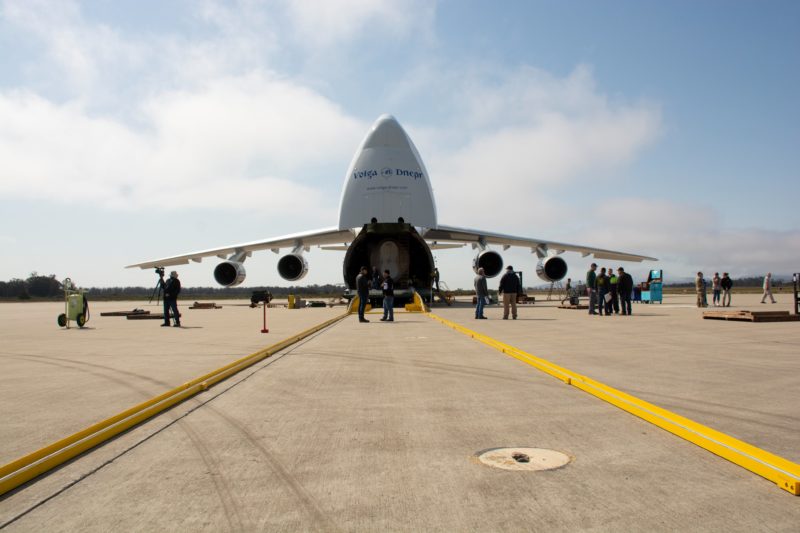
As United Launch Alliance (ULA) readies the next member of its Atlas V fleet to lift the second Orbital Flight Test (OFT-2) of Boeing’s CST-100 Starliner to the International Space Station (ISS) at the end of July, another rocket and payload have been delivered to Vandenberg Space Force Base, Calif., for a launch later this summer.
Landsat-9—a critical joint endeavor between NASA and the U.S. Geological Survey, tasked with making moderate-resolution observations of Earth’s terrestrial and polar regions and visible and infrared wavelengths—arrived safely at the West Coast launch site on Thursday, to be joined by the 107-foot-long (32-meter) Common Core Booster (CCB) of its own “Mighty Atlas”. Landsat-9 is set to fly from Vandenberg’s Space Launch Complex (SLC)-3E, no sooner than 11:11 a.m. PDT on 16 September.
It has been an unusually “light” year in terms of launches for ULA, with only two missions having been completed thus far. A triple-barreled Delta IV Heavy roared aloft from Vandenberg in late April, laden with the highly secretive NROL-82 payload for the National Reconnaissance Office. Then an Atlas V lifted the fifth geostationary element of the Space-Based Infrared System (SBIRS GEO-5) from Cape Canaveral Space Force Station, Fla., in mid-May.
Next up in late June should have been Space Test Program (STP)-3—a mixed-manifest research and technology mission, conducted collaboratively by the Space Force and the Space and Missile Systems Center (SMC)—which had already met with substantial delay from its original placeholder launch date in February, due to payload readiness issues.
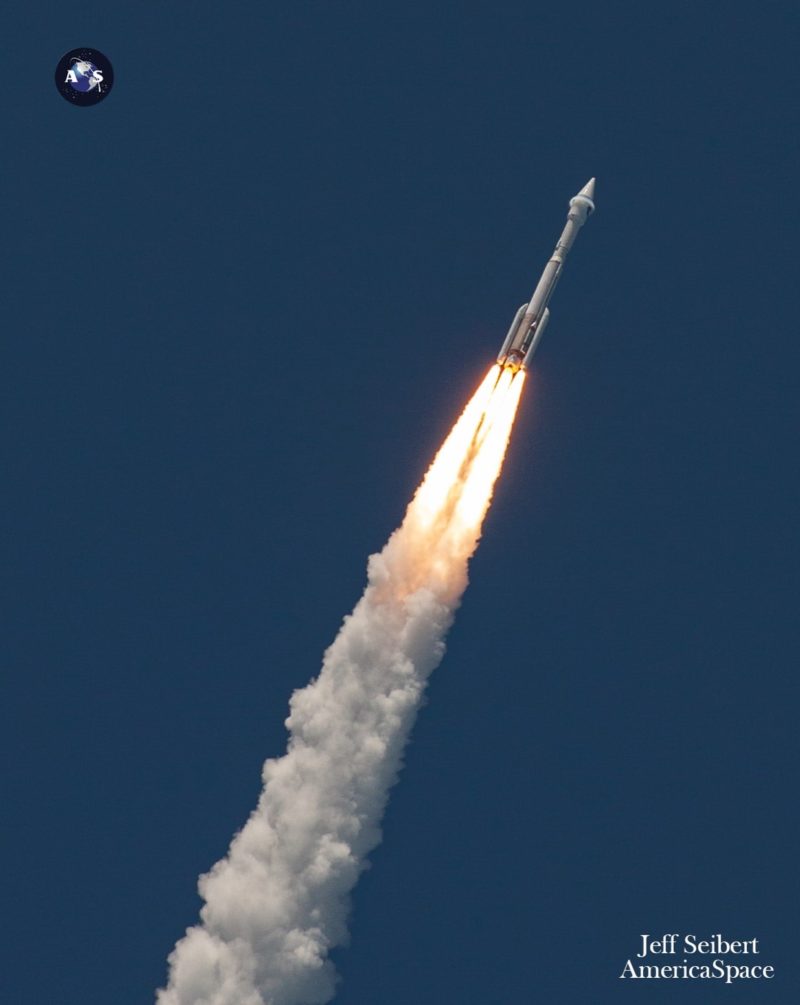
But during the SBIRS GEO-5 launch in May, anomalous behavior was noted in the Centaur upper stage’s RL-10C engine, which triggered further delays to an already beleaguered mission. It seems likely that STP-3 may fly later in August—between the OFT-2 and Landsat-9 flights—although a definitive No Earlier Than (NET) date has yet to be announced.
And although progress on completing Landsat-9 and delivering its booster has flowed like clockwork, the mission has suffered much delay, thanks to the worldwide march of the COVID-19 coronavirus pandemic. Initiation of the program got underway in early 2015, with expectations that Landsat-9 would boast an Operational Land Imager (OLI-2), built by Ball Aerospace & Technologies Corp., for visible, near-infrared and shortwave-infrared observations, and a Thermal Infrared Sensor (TIRS-2) for examining land-surface temperatures across two thermal infrared bands. The latter was furnished by NASA’s Goddard Space Flight Center (GSFC) in Greenbelt, Md. Both instruments are similar to those aboard the most recent satellite, Landsat-8—originally known as the “Landsat Data Continuity Mission”—which was launched in February 2013.
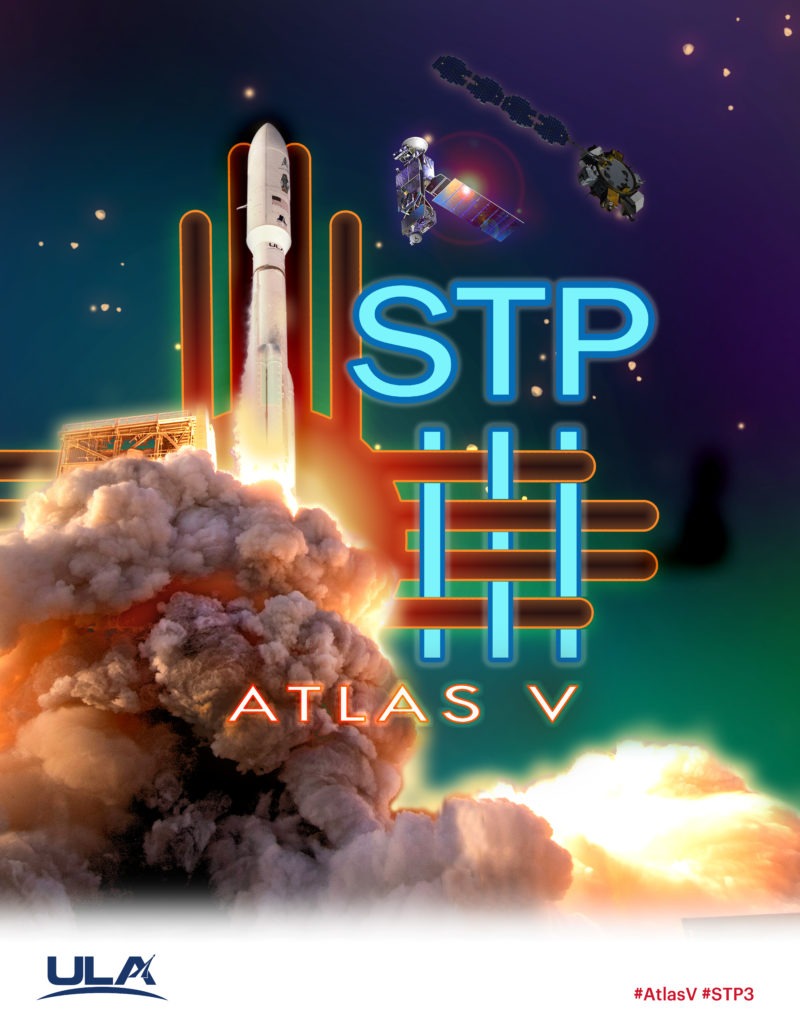
Contracts worth $129.9 million to build Landsat-9 were awarded to Northrop Grumman Corp. in October 2016, with launch originally scheduled for December 2020. The program passed smoothly through its System Requirements Review (SRR) and Preliminary Design Review (PDR) stages in early 2017 and in October of that year ULA was selected to launch Landsat 9 atop its “barebones” Atlas V 401 from SLC-3E at Vandenberg.
In 2018, the flight cryocooler for TIRS-2 was delivered ahead of schedule and the Critical Design Review (CDR) was completed. In January 2020, OLI-2 and TIRS-2 were successfully integrated aboard Landsat 9.
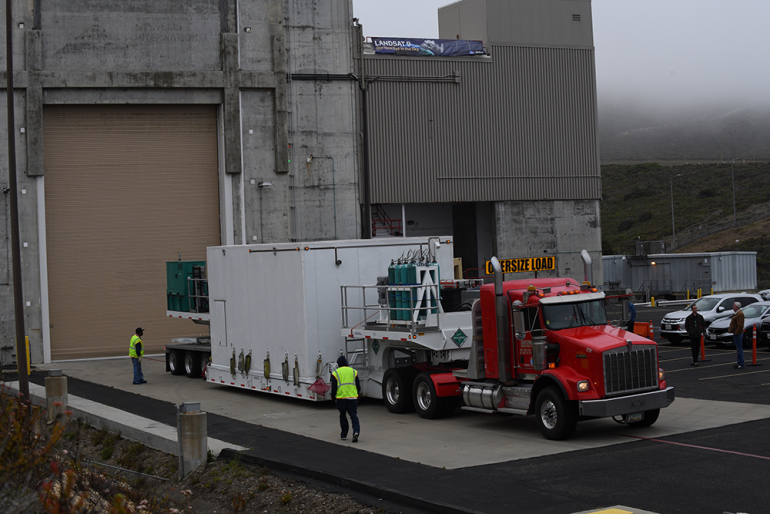
Under the terms of the contract with ULA, launch was scheduled for June 2021, whilst protecting the possibility of flying the mission as soon as December 2020. However, the effects of COVID-19 pushed both dates inexorably to the right; firstly to no sooner than June 2021 and now 16 September.
Earlier this spring, Landsat-9 wrapped up thermal-vacuum testing at Northrop Grumman’s facility in Gilbert, Ariz., after which teams pressed directly into electrical testing, closeouts of the satellite and a final Pre-Ship Review and Flight Operations Review/Operations Readiness Review late last month.
The Centaur upper stage and bullet-like payload fairing were the first hardware elements to arrive at Vandenberg, followed by the 107-foot-long (32-meter) Atlas V CCB and Landsat-9 itself earlier this week. Ahead lies a fully-fueled Wet Dress Rehearsal (WDR)—typically conducted prior to critical missions with narrow launch windows—next month. Liftoff is targeted for the opening of a 30-minute “window” at 11:11 a.m. PDT on 16 September, with opportunities reportedly available until the end of that month.
Elsewhere, hardware components are converging on a raft of other Atlas V flights planned before year’s end. Last October, the CCB for the Space Force’s USSF-8 mission arrived at Cape Canaveral Space Force Station, where it is currently targeting a launch from Space Launch Complex (SLC)-41 later this year. The mission will feature the deployment of a pair of Geosynchronous Space Situation Awareness Program (GSSAP) payloads, representing the fifth and sixth such satellites to be launched following two other pairings which rode Delta IV boosters in July 2014 and August 2016.
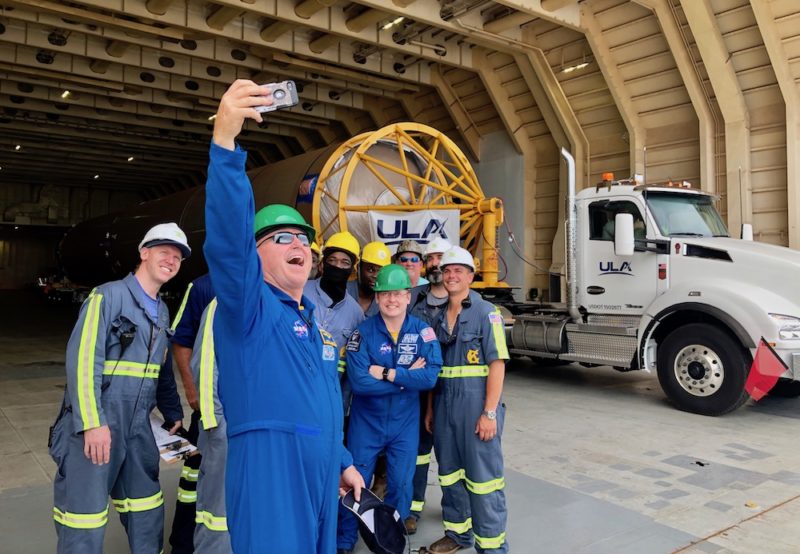
Described as a “neighborhood watch system” for high-orbiting U.S. military satellite, the members of GSSAP “drift” above and below the geostationary belt and employ advanced electro-optical sensors to observe other objects. This data is expected to enhance the abilities of the Space Force to understand the geosynchronous environment and develop novel safety mechanisms to assure collision-avoidance. And the GSSAP birds will also discern evolving threats, including efforts by adversaries to avoid detection or demonstrate capabilities which may be harmful to critical U.S. assets.
Rounding out 2021, and bound to a critically-tight launch window, is NASA’s Lucy mission to explore the swarm of small bodies—nicknamed “Trojans”—which lead or trail the orbital path of the giant planet Jupiter. That mission must launch during a tight period of three weeks from mid-October through the early part of November, which may carry a corresponding penalty on other ULA flights if they are delayed further.
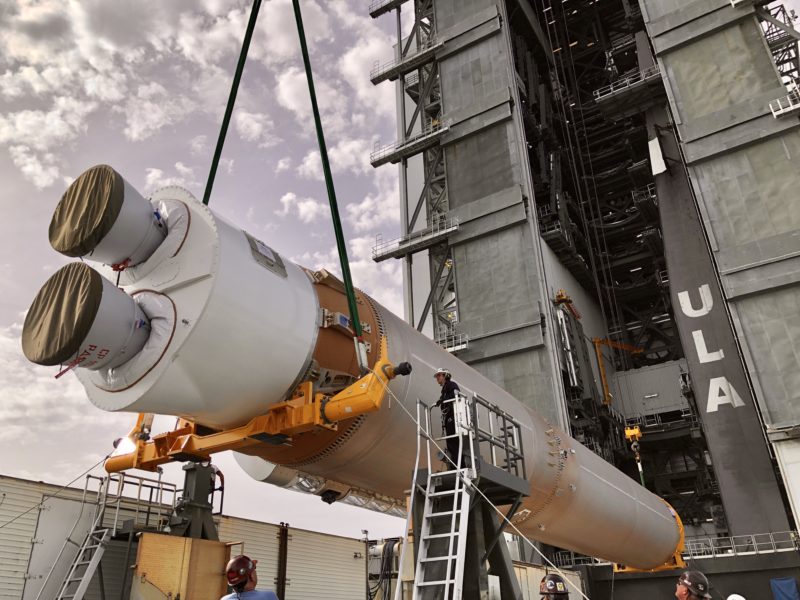
Just last month, the Atlas V for the first Starliner mission with astronauts aboard—the Crew Flight Test (CFT), featuring Commander Barry “Butch” Wilmore, Pilot Nicole Mann and Joint Operations Commander (JOC) Mike Fincke—arrived in Florida to enter processing for launch.
Assuming the success of OFT-2, the CFT mission may fly later this year, although a launch in the early part of 2022 appears more probable. Also on the manifest for the closing months of 2021 are the classified USSF-12 for the Space Force and the latest Geostationary Operational Environmental Satellite (GOES-T) for the National Oceanic and Atmospheric Administration (NOAA).






2 Comments
2 Pings & Trackbacks
Pingback:Mighty Atlas Launches Landsat-9, Rideshares to Orbit on First Four-Burn Centaur Mission « AmericaSpace
Pingback:Mighty Atlas Launches Landsat-9, Rideshares to Orbit on First 4-Burn Centaur Mission « AmericaSpace - Technology News